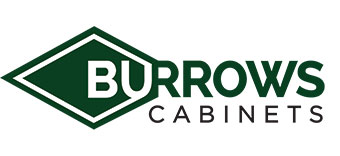Materials – What to Expect
Burrows Cabinets’ wood cabinets, doors and components are hand built using the finest furniture grade natural hardwoods, natural softwoods and manufactured sheet materials depending on application and selections. Many of these materials are products of nature, and therefore, variations in color, grain and texture are to be expected. Some materials have unique grain characteristics that may cause the final finish to look darker or lighter in some areas. Therefore, while your cabinetry will have the same basic appearance as our door samples, they will be absolutely unique and perhaps noticeably different.
Engineered wood products provide long term consistent color and grain patterns, however slight variations are expected and acceptable in man-made and natural products. Light reflecting from different angles, proximity to light source, differences in color of light source and difference in surrounding surfaces can cause the illusion of variations in color and shading. These differences are to be expected and naturally occurring. You can anticipate the consistency of quality and craftsmanship in all of our cabinetry.
Stained and Painted Finishes
Our finished sample is a close color representation of what an overall kitchen will look like and is not meant to match every door or cabinet. The artistic nature of hand built cabinetry with hand-applied finish, along with the unique qualities of natural and manufactured materials can create an unbalanced or inconsistent look. The differences in the final look from home to home or door to door are part of the design.
Discoloration: All finishes are susceptible to discoloration due to airborne particles such as cooking, grilling, smoke, fireplaces or candles. Prolonged exposure to natural or artificial light and/or moisture may alter the finish color as well. Touch up or replacement items completed after installation may not result in an exact match due to discoloration.
Expansion and Contraction:
Please be aware wood expands and contracts due to environmental changes in temperature and humidity. Five-piece cabinet doors (and multi-panel cabinet doors) are constructed with a small amount space in the frame groove, which allows the panel to float slightly within the frame, allowing for expansion of the panel due to changes in the environment, without causing the frame to split or crack.
The natural process of expansion and contraction can create open joints in the finish. An open joint line related to expansion or contraction is not considered a defect. The finish will still protect the surface, and the structural integrity of the joint will not be affected. Wood may expand and contract differently from cabinet to cabinet and even joints within the same cabinet may behave differently. Some joined wood may not show any joint lines, others may be slightly visible, while others may display easily visible joint lines. Joint lines also may occur due to repeated impacts from normal everyday use. An exposed open wood joint can be damaged from prolonged exposure to water or heavy moisture. Therefore, wipe off any excess moisture from cabinet surfaces as soon as possible.
